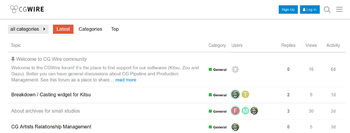At each step of fabrication, a validation is needed. During the process, there are numerous back-and-forth between producers, directors and CG artists to iterate towards the best result. This is the reason why the process of making a movie differs from an industrial one. A movie production is a continuous discussion to negotiate changes based on the artistic value of an asset and the time available. So, it seems natural for people to always ask for more improvements once a shot or an asset is shipped. The term that is used to describe the fact that a change was asked is “retake”. Some called it “take” to make it even shorter.
But at some point, everyone arrives at a consensus and it stops. With good production management tools, like Shotgun, Ftrack, Attract or Kitsu, discussions can be tracked properly. You can have an history of required changes and know what asset or shot are in a retake state. Though it’s a positive point, there are two dimensions which are often harder to follow.
The first challenge is the number of retakes. Building 3 shots with no retakes has a significantly different impact on the budget than having 40 retakes on a single shot. The nature of the retake is an important thing to record too. Changing a simple aspect at the compositing step requires much less work than having to rethink the setup of one of the main characters. A good way to deal with it, is to count every time a retake is being performed. Or better yet, counting the time spent on each retakes of an asset.
The second aspect is to figure out who is going to handle the changes. If a senior CG artist is involved, it has much more impact on the budget than if it is a junior or an intern who made the fixes. Once again, if you can mix your retake tracking with a time-tracking based on seniority, it could help to identify the costly asset or shots.
Evaluating the cost of shot or an asset is deeply tied to the number, the time spent and the nature of the retakes that occur in the process of building a movie. If you can track all these aspects you will know which part of the production cost you more. It will allow you to anticipate potential problems earlier and to learn from your previous productions.
At CGWire we are currently working on a production management software dedicated to small and mid-size studios that mainly do 3D. If you are interested contact us, we would be glad to show you our tool and have your feedback!



